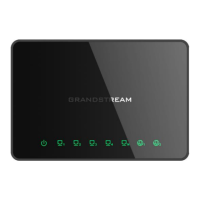• PSK: used to establish a point-to-point OpenVPN®
configuration. A VPN tunnel will be created with a server
endpoint of a specified IP and a client endpoint of specified
IP. Encrypted communication between client and server will
occur over UDP port 1194, the default OpenVPN® port.
• SSL: Authentication is made using certificates only (no
user/pass authentication). Each user has a unique client
configuration that includes their personal certificate and key.
This is useful if clients should not be prompted to enter a
username and password, but it is less secure as it relies
only on something the user has (TLS key and certificate).
• User Auth: Authentication is made using only CA, user and
password, no certificates. Useful if the clients should not
have individual certificates.
Less secure as it relies on a shared TLS key plus only
something the user knows (Username/password).
• SSL + User Auth: Requires both certificate and username
/ password. Each user has a unique client configuration that
includes their personal certificate and key.
Most secure, as there are multiple factors of authentication
(TLS Key and Certificate that the user has, and the
username/password they know).
Choose to which destination group or WAN to allow traffic from the
VPN, this will generate automatically a forwarding rule under the
menu Firewall → Traffic Rules → Forward.

